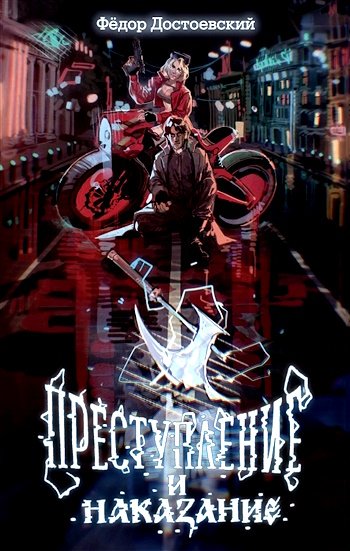iCEO
As he was finishing work on the “Think Different”
ad, Jobs did some different thinking of his own. He decided that he would officially take over running the company, at least on a temporary basis. He had been the de facto leader since Amelio’s ouster ten weeks earlier, but only as an advisor. Fred Anderson had the titular role of interim CEO. On September 16, 1997, Jobs announced that he would take over that title, which inevitably got abbreviated as iCEO. His commitment was tentative: He took no salary and signed no contract. But he was not tentative in his actions. He was in charge, and he did not rule by consensus.
That week he gathered his top managers and staff in the Apple auditorium for a rally, followed by a picnic featuring beer and vegan food, to celebrate his new role and the company’s new ads. He was wearing shorts, walking around the campus barefoot, and had a stubble of beard. “I’ve been back about ten weeks, working really hard,” he said, looking tired but deeply determined. “What we’re trying to do is not highfalutin.
We’re trying to get back to the basics of great products, great marketing, and great distribution. Apple has drifted away from doing the basics really well.”
For a few more weeks Jobs and the board kept looking for a permanent CEO. Various names surfaced
Steve Jobs by Walter Isaacson 438
—George M. C. Fisher of Kodak, Sam Palmisano at IBM, Ed Zander at Sun Microsystems—but most of the candidates were understandably reluctant to consider becoming CEO if Jobs was going to remain an active board member. The San Francisco Chronicle reported that Zander declined to be considered because he
“didn’t want Steve looking over his shoulder, second-guessing him on every decision.” At one point Jobs and Ellison pulled a prank on a clueless computer consultant who was campaigning for the job; they sent him an email saying that he had been selected, which caused both amusement and embarrassment when stories appeared in the papers that they were just toying with him.
By December it had become clear that Jobs’s iCEO status had evolved from interim to indefinite. As Jobs continued to run the company, the board quietly deactivated its search. “I went back to Apple and tried to hire a CEO, with the help of a recruiting agency, for almost four months,” he recalled. “But they didn’t produce the right people. That’s why I finally stayed.
Apple was in no shape to attract anybody good.”
The problem Jobs faced was that running two companies was brutal. Looking back on it, he traced his health problems back to those days: It was rough, really rough, the worst time in my life.
I had a young family. I had Pixar. I would go to work at 7
a.m. and I’d get back at 9 at night, and the kids would be in bed. And I couldn’t speak, I literally couldn’t, I was so exhausted. I couldn’t speak to Laurene. All I could do was watch a half hour of TV and vegetate. It got close to killing me. I was driving up to Pixar and down to Apple in a black Porsche convertible, and I started to get kidney stones. I would rush to the hospital and the hospital would give me a shot of Demerol in the butt and eventually I would pass it.
Steve Jobs by Walter Isaacson 439
Despite the grueling schedule, the more that Jobs immersed himself in Apple, the more he realized that he would not be able to walk away. When Michael Dell was asked at a computer trade show in October 1997
what he would do if he were Steve Jobs and taking over Apple, he replied, “I’d shut it down and give the money back to the shareholders.” Jobs fired off an email to Dell. “CEOs are supposed to have class,” it said. “I can see that isn’t an opinion you hold.” Jobs liked to stoke up rivalries as a way to rally his team—he had done so with IBM and Microsoft—and he did so with Dell. When he called together his managers to institute a build-to-order system for manufacturing and distribution, Jobs used as a backdrop a blown-up picture of Michael Dell with a target on his face. “We’re coming after you, buddy,” he said to cheers from his troops.
One of his motivating passions was to build a lasting company. At age twelve, when he got a summer job at Hewlett-Packard, he learned that a properly run company could spawn innovation far more than any single creative individual. “I discovered that the best innovation is sometimes the company, the way you organize a company,” he recalled. “The whole notion of how you build a company is fascinating. When I got the chance to come back to Apple, I realized that I would be useless without the company, and that’s why I decided to stay and rebuild it.”
Killing the Clones
One of the great debates about Apple was whether it should have licensed its operating system more aggressively to other computer makers, the way Microsoft licensed Windows. Wozniak had favored that approach from the beginning. “We had the most beautiful operating system,” he said, “but to get it you had to buy our hardware at twice the price. That was a mistake. What we should have done was calculate an
Steve Jobs by Walter Isaacson 440
appropriate price to license the operating system.” Alan Kay, the star of Xerox PARC who came to Apple as a fellow in 1984, also fought hard for licensing the Mac OS software. “Software people are always multiplatform, because you want to run on everything,”
he recalled. “And that was a huge battle, probably the largest battle I lost at Apple.”
Bill Gates, who was building a fortune by licensing Microsoft’s operating system, had urged Apple to do the same in 1985, just as Jobs was being eased out. Gates believed that, even if Apple took away some of Microsoft’s operating system customers, Microsoft could make money by creating versions of its applications software, such as Word and Excel, for the users of the Macintosh and its clones. “I was trying to do everything to get them to be a strong licensor,” he recalled. He sent a formal memo to Sculley making the case. “The industry has reached the point where it is now impossible for Apple to create a standard out of their innovative technology without support from, and the resulting credibility of, other personal computer manufacturers,” he argued. “Apple should license Macintosh technology to 3–5 significant manufacturers for the development of ‘Mac Compatibles.’” Gates got no reply, so he wrote a second memo suggesting some companies that would be good at cloning the Mac, and he added, “I want to help in any way I can with the licensing. Please give me a call.”
Apple resisted licensing out the Macintosh operating system until 1994, when CEO Michael Spindler allowed two small companies, Power Computing and Radius, to make Macintosh clones.
When Gil Amelio took over in 1996, he added Motorola to the list. It turned out to be a dubious business strategy: Apple got an $80 licensing fee for each computer sold, but instead of expanding the market, the
Steve Jobs by Walter Isaacson 441
cloners cannibalized the sales of Apple’s own high-end computers, on which it made up to $500 in profit.
Jobs’s objections to the cloning program were not just economic, however. He had an inbred aversion to it. One of his core principles was that hardware and software should be tightly integrated. He loved to control all aspects of his life, and the only way to do that with computers was to take responsibility for the user experience from end to end.
So upon his return to Apple he made killing the Macintosh clones a priority. When a new version of the Mac operating system shipped in July 1997, weeks after he had helped oust Amelio, Jobs did not allow the clone makers to upgrade to it. The head of Power Computing, Stephen “King” Kahng, organized pro-cloning protests when Jobs appeared at Boston Macworld that August and publicly warned that the Macintosh OS would die if Jobs declined to keep licensing it out. “If the platform goes closed, it is over,”
Kahng said. “Total destruction. Closed is the kiss of death.”
Jobs disagreed. He telephoned Ed Woolard to say he was getting Apple out of the licensing business. The board acquiesced, and in September he reached a deal to pay Power Computing $100 million to relinquish its license and give Apple access to its database of customers. He soon terminated the licenses of the other cloners as well. “It was the dumbest thing in the world to let companies making crappier hardware use our operating system and cut into our sales,” he later said.
Product Line Review
One of Jobs’s great strengths was knowing how to focus. “Deciding what not to do is as important as deciding what to do,” he said. “That’s true for companies, and it’s true for products.”
He went to work applying this principle as soon as
Steve Jobs by Walter Isaacson 442
he returned to Apple. One day he was walking the halls and ran into a young Wharton School graduate who had been Amelio’s assistant and who said he was wrapping up his work. “Well, good, because I need someone to do grunt work,” Jobs told him. His new role was to take notes as Jobs met with the dozens of product teams at Apple, asked them to explain what they were doing, and forced them to justify going ahead with their products or projects.
He also enlisted a friend, Phil Schiller, who had worked at Apple but was then at the graphics software company Macromedia. “Steve would summon the teams into the boardroom, which seats twenty, and they would come with thirty people and try to show PowerPoints, which Steve didn’t want to see,” Schiller recalled. One of the first things Jobs did during the product review process was ban PowerPoints. “I hate the way people use slide presentations instead of thinking,” Jobs later recalled. “People would confront a problem by creating a presentation. I wanted them to engage, to hash things out at the table, rather than show a bunch of slides. People who know what they’re talking about don’t need PowerPoint.”
The product review revealed how unfocused Apple had become. The company was churning out multiple versions of each product because of bureaucratic momentum and to satisfy the whims of retailers. “It was insanity,” Schiller recalled. “Tons of products, most of them crap, done by deluded teams.”
Apple had a dozen versions of the Macintosh, each with a different confusing number, ranging from 1400 to 9600. “I had people explaining this to me for three weeks,” Jobs said. “I couldn’t figure it out.” He finally began asking simple questions, like, “Which ones do I tell my friends to buy?”

























